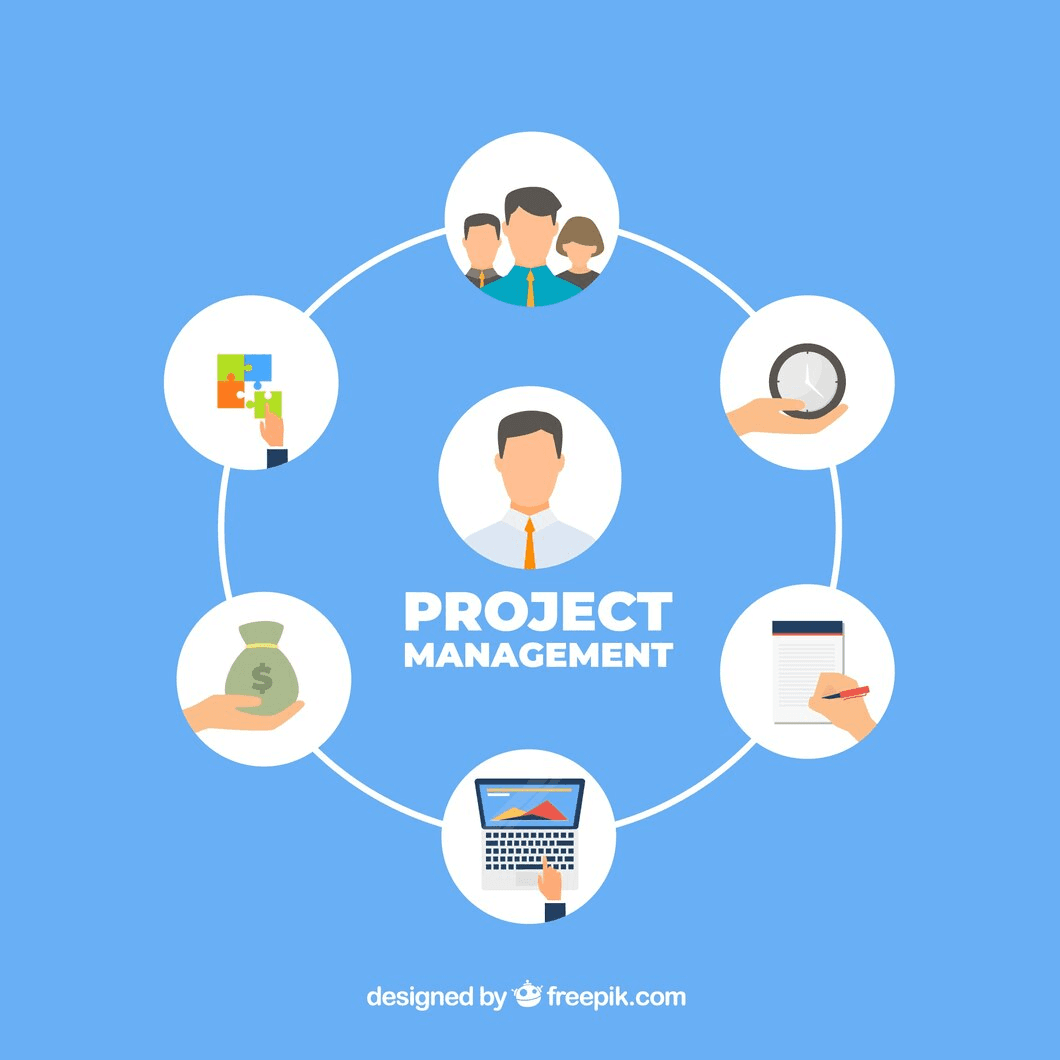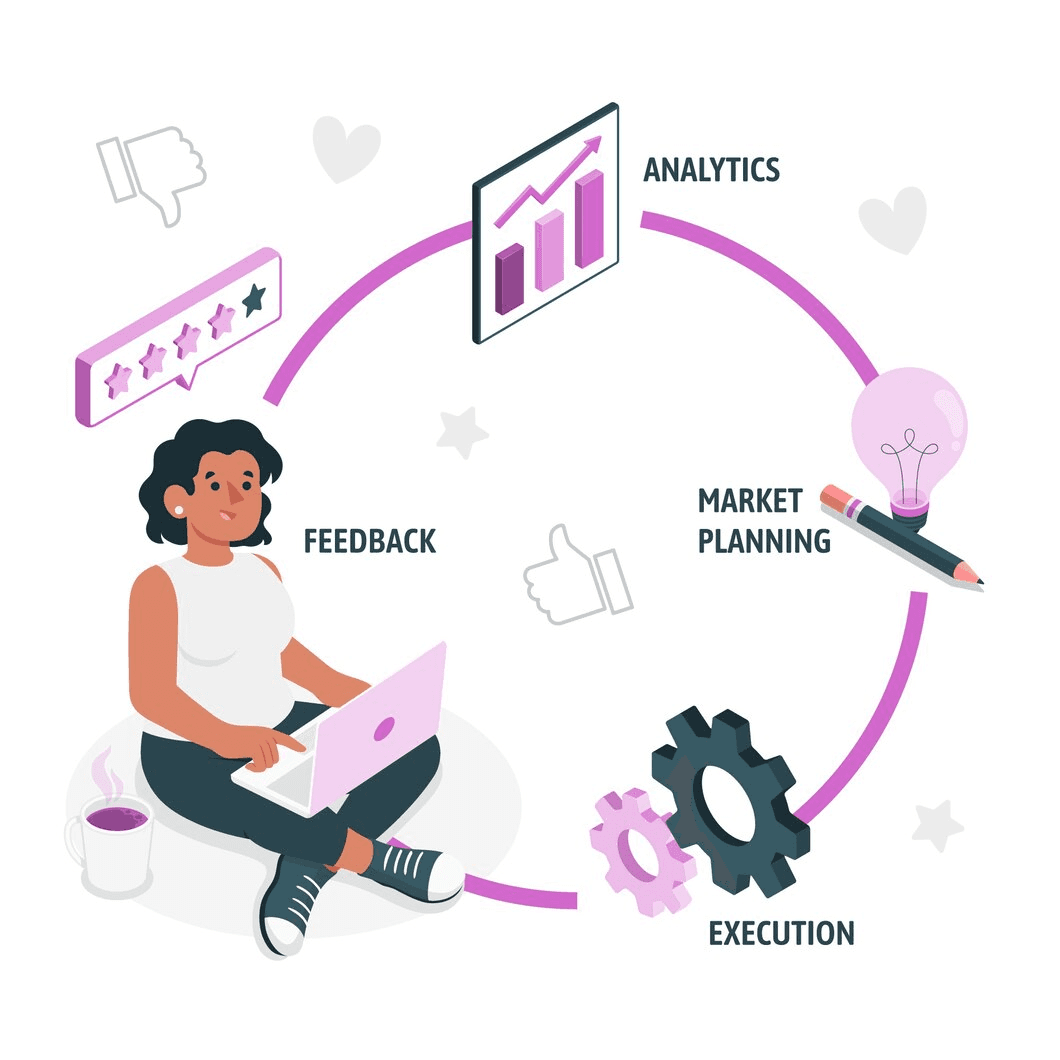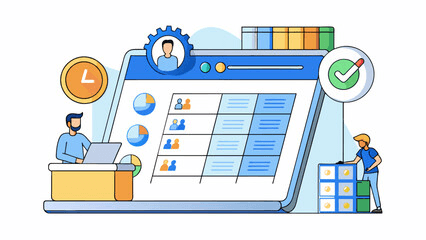Organizations often struggle to keep pace with changing demands and expectations, leading to project delays and dissatisfied stakeholders. This challenge highlights the need for a more adaptive approach to project management.
Agile methodology offers a solution by enabling teams to embrace flexibility, foster collaboration, and maintain a strong customer focus. By understanding and implementing agile principles, organizations can enhance their project management practices, streamline processes, and ultimately drive successful outcomes that align with stakeholder needs.
Defining Success in Agile Project Management
Success in project management extends beyond the mere completion of tasks; it encompasses delivering value to stakeholders and ensuring a high-quality outcome. Agile methodology facilitates this by prioritizing customer satisfaction through continuous feedback loops.
Teams break down projects into manageable iterations, allowing them to assess progress and make adjustments based on real-time feedback. This iterative approach not only aligns the project with client expectations but also fosters a culture of responsiveness and adaptability.
The value of measuring success can be quantified through metrics such as customer satisfaction scores, time-to-market, and the quality of deliverables. By focusing on these metrics, teams can ensure that they are not only meeting deadlines but also delivering solutions that genuinely resonate with their clients.
Also read: Effective Strategies for Managing Projects Through Different Methodologies
Challenges in Implementing Agile Practices
Despite its advantages, adopting agile methodologies is not without challenges. Many organizations face resistance to change, stemming from entrenched practices and mindsets. Transitioning from a traditional waterfall approach to agile requires a cultural shift that emphasizes collaboration, flexibility, and empowerment.
Addressing these challenges involves robust training programs that equip team members with the necessary skills and understanding of agile principles. Open communication plays a pivotal role in easing the transition; stakeholders must feel comfortable voicing concerns and sharing experiences to collectively navigate the process.
Moreover, leaders must demonstrate commitment to agile values by modeling behaviors that promote collaboration and adaptability. This top-down approach is essential in cultivating an environment where agile practices can flourish.
Key Factors for Successful Adoption of Agile
The successful implementation of agile project management hinges on several key factors.
Strong leadership is paramount. Leaders must champion agile values and practices, guiding their teams through the transition. This involves not only understanding agile principles but also actively participating in agile rituals, such as daily stand-ups and sprint retrospectives.
Creating a supportive environment is equally important. Teams should feel empowered to make decisions and take ownership of their work. This autonomy leads to increased motivation and engagement, as team members recognize their contributions directly impact project outcomes.
Additionally, establishing clear communication channels ensures that information flows freely among team members, minimizing misunderstandings and enhancing collaboration.
Enhancing Collaboration with Agile Frameworks
Collaboration is at the heart of agile methodologies. Agile frameworks, such as Scrum and Kanban, are designed to promote teamwork and effective communication. Daily stand-ups encourage team members to share updates and challenges, fostering a sense of accountability and support.
Digital collaboration tools play a crucial role in enhancing this collaboration, especially for remote teams. These tools allow for real-time updates, visibility into project progress, and a shared understanding of goals and responsibilities. When teams utilize project management software that aligns with agile practices, they can seamlessly track tasks, manage workloads, and visualize progress.
By creating a collaborative environment, teams can leverage diverse perspectives and skills, ultimately leading to more innovative solutions and successful project outcomes.
Also read: The Impact of Agile Project Management on Team Collaboration
Balancing Flexibility and Structure
One of the hallmark benefits of agile methodology is its ability to strike a balance between flexibility and structure. Unlike traditional project management approaches, which often adhere strictly to predefined plans, agile encourages teams to remain adaptable in the face of changing circumstances.
This balance is achieved through regular iterations. By breaking projects into smaller, manageable parts, teams can adjust their strategies and priorities based on evolving requirements or feedback. This flexibility enables teams to respond effectively to unexpected challenges while still adhering to a structured framework that keeps projects on track.
Establishing a well-defined process for sprint planning, reviews, and retrospectives ensures that teams remain focused on their goals while allowing for necessary adaptations.
Integrating Customer Feedback
Customer feedback is a cornerstone of agile project management. The ability to gather and integrate client input throughout the project lifecycle is a significant advantage of agile methodologies.
Agile teams prioritize delivering value incrementally, allowing clients to assess progress and provide feedback at various stages. This iterative approach helps to identify potential issues early on and ensures that the final product aligns with client expectations.
Moreover, establishing regular touchpoints with clients fosters a collaborative relationship. When clients feel involved in the process, they are more likely to be satisfied with the final outcome and develop a sense of ownership over the project.
Fostering Accountability in Agile Teams
Accountability is essential for the success of agile teams. In an agile environment, team members are empowered to take ownership of their tasks, making it imperative to cultivate a culture that encourages responsibility.
Techniques to foster accountability include setting clear expectations, conducting regular check-ins, and utilizing visual management tools, such as Kanban boards. These practices enhance transparency and ensure that everyone understands their roles and responsibilities within the project.
Moreover, fostering a psychologically safe environment encourages team members to voice their concerns and share challenges without fear of judgment. This openness leads to a more resilient team capable of navigating obstacles together.
Aligning Project Goals with Agile Tools
Utilizing the right project management tools is crucial for maintaining alignment with project goals. Agile project management software provides teams with the resources they need to track progress, visualize workflows, and communicate effectively.
Integrating project management tools that support agile practices enables teams to streamline processes and enhance productivity. These tools facilitate task assignment, progress tracking, and feedback collection, allowing teams to focus on delivering value while remaining aligned with their goals.
By leveraging technology that aligns with agile principles, teams can enhance their effectiveness and adaptability in the face of changing project demands.
Measuring Productivity and Progress
Measuring productivity and progress is vital for understanding the effectiveness of agile methodologies. Agile teams should utilize key performance indicators (KPIs) to evaluate their performance regularly.
Common metrics include sprint velocity, cycle time, and lead time. By analyzing these metrics, teams can identify trends, uncover bottlenecks, and make data-driven decisions to improve their processes. This continuous improvement mindset is fundamental to the agile approach.
Furthermore, conducting retrospectives after each iteration provides teams with opportunities to reflect on their performance, discuss lessons learned, and implement actionable improvements in subsequent sprints.
Real-World Outcomes of Agile Methodology
Organizations that adopt agile methodologies often experience significant improvements in project outcomes.
For instance, case studies have shown that agile teams can deliver projects faster and with higher quality than traditional counterparts. By embracing agility, teams can respond more effectively to changes, reducing time-to-market and increasing client satisfaction.
Moreover, the collaborative nature of agile fosters innovation, as diverse perspectives come together to solve complex problems. This collective intelligence often leads to creative solutions that enhance the overall value delivered to clients.
Enhancing Client Experience through Agile
Agile methodologies enhance the client experience by prioritizing communication and responsiveness. By involving clients throughout the project lifecycle, teams can ensure that their needs are met and expectations are aligned.
The iterative nature of agile allows for regular feedback, enabling teams to make adjustments that reflect client input. This collaborative approach fosters stronger relationships and builds trust, as clients feel heard and valued.
Ultimately, the emphasis on client-centricity not only improves satisfaction but can also lead to long-term partnerships and repeat business.
Facilitating Decision-Making in Agile Teams
Effective decision-making is critical in agile teams, where rapid changes are common. Empowering team members to make decisions within their areas of expertise enhances responsiveness and fosters a sense of ownership.
Leaders play a pivotal role in facilitating this process by providing clear guidelines and support. Encouraging team members to voice their opinions and collaborate on solutions ensures that decisions are well-informed and consider diverse perspectives.
Moreover, creating a structured decision-making process helps teams navigate complex situations while remaining agile. This clarity reduces confusion and accelerates the decision-making process, allowing teams to move forward swiftly.
Also read: Understanding Agile vs. Waterfall: Which Methodology Is Right for Your Project?
Managing Dependencies and Prioritizing Tasks
Managing dependencies and prioritizing tasks is essential in an agile context. Agile teams must proactively identify dependencies that could hinder progress and develop strategies to address them.
Techniques such as backlog refinement and sprint planning can help teams prioritize tasks based on their importance and urgency. By visualizing workflows and dependencies, teams can streamline their processes and minimize delays.
Furthermore, utilizing tools that support agile practices can enhance visibility into task priorities and dependencies, ensuring that teams remain aligned and focused on delivering value.
Impact of Agile on Resource Allocation and Team Dynamics
Agile methodologies positively influence resource allocation and team dynamics by promoting a more fluid approach to project management. Teams can allocate resources based on current needs, allowing for greater flexibility and responsiveness.
This adaptability enhances team cohesion as members work collaboratively toward common goals. By fostering an environment that encourages collaboration, organizations can harness the strengths of their team members, ultimately leading to better project outcomes.
Moreover, agile practices enable teams to reallocate resources quickly as project priorities shift, ensuring that the right talent is available for the right tasks at the right time.
Ensuring Team Alignment with Agile Principles
Ensuring that all team members understand and align with agile principles is vital for success. Organizations can achieve this through training sessions, workshops, and regular check-ins that reinforce agile values.
Fostering an environment that values agility encourages teams to embrace collaboration, adaptability, and continuous improvement. By cultivating a shared understanding of agile practices, teams can work more effectively and maintain alignment throughout the project lifecycle.
Regularly revisiting agile principles and discussing their relevance in the context of ongoing projects can help reinforce the importance of these values and encourage teams to embrace them wholeheartedly.
Conclusion
The benefits of agile methodology in project management are profound and far-reaching. By enhancing collaboration, flexibility, and accountability, agile practices empower teams to navigate modern project complexities confidently.
Embracing these methodologies fosters a culture of responsiveness and innovation, leading to successful outcomes that align with stakeholder needs. The continuous focus on improvement and customer-centricity positions agile as a robust framework for achieving project success.
With tools like Pinrom, available for just $1/user, organizations can effectively implement agile practices and drive transformative growth in their project delivery.








